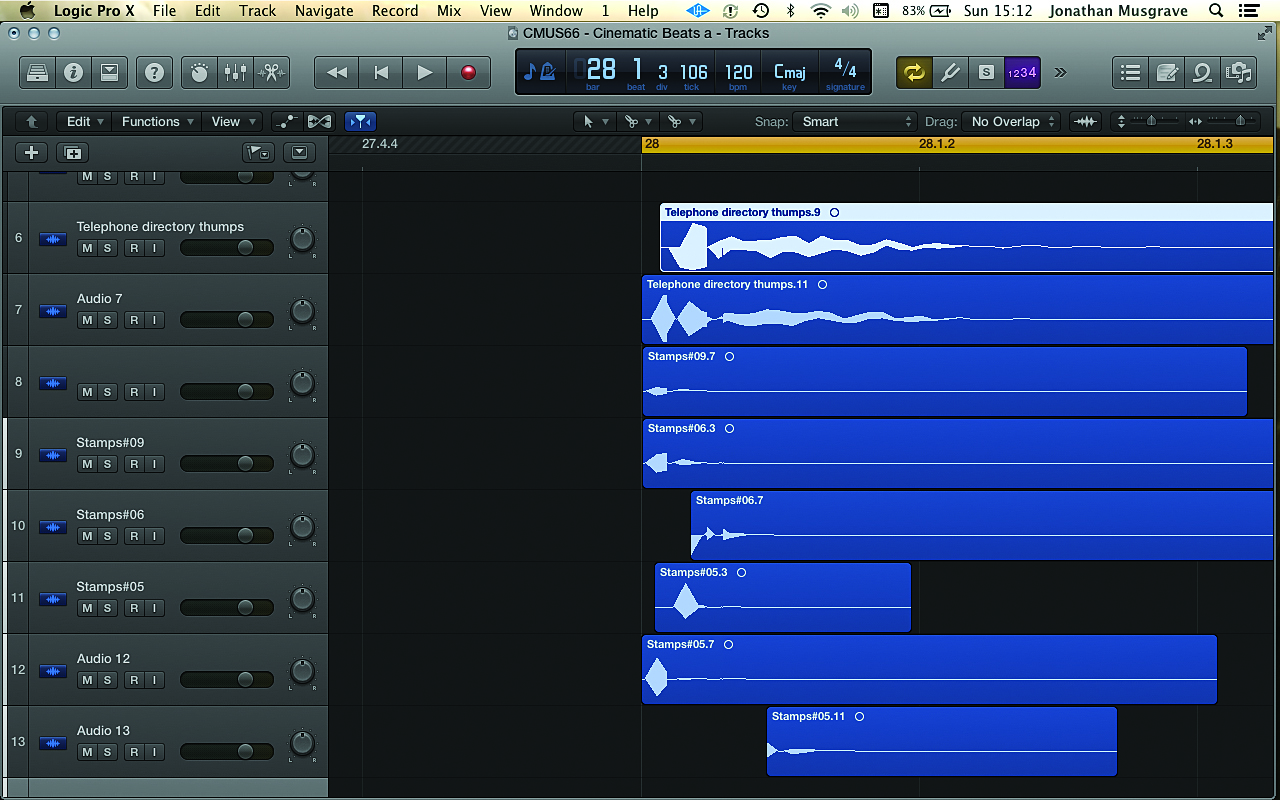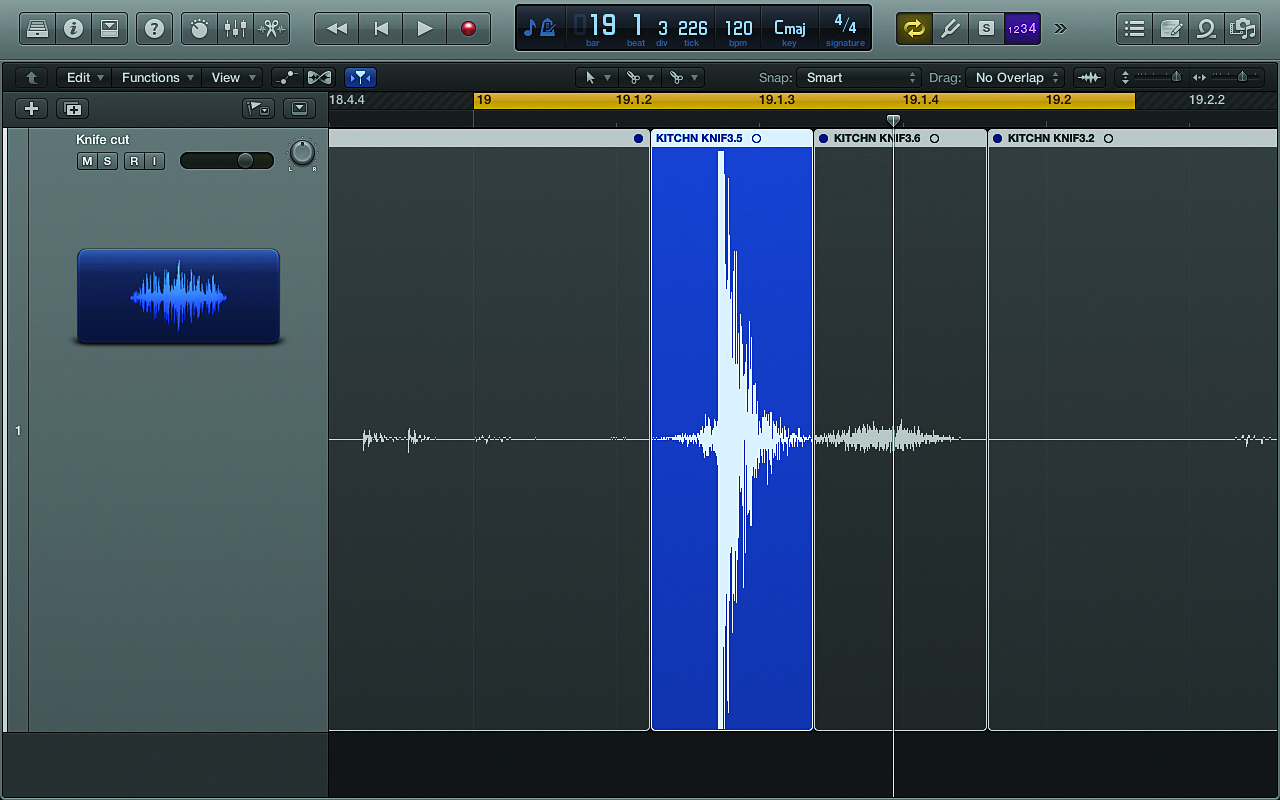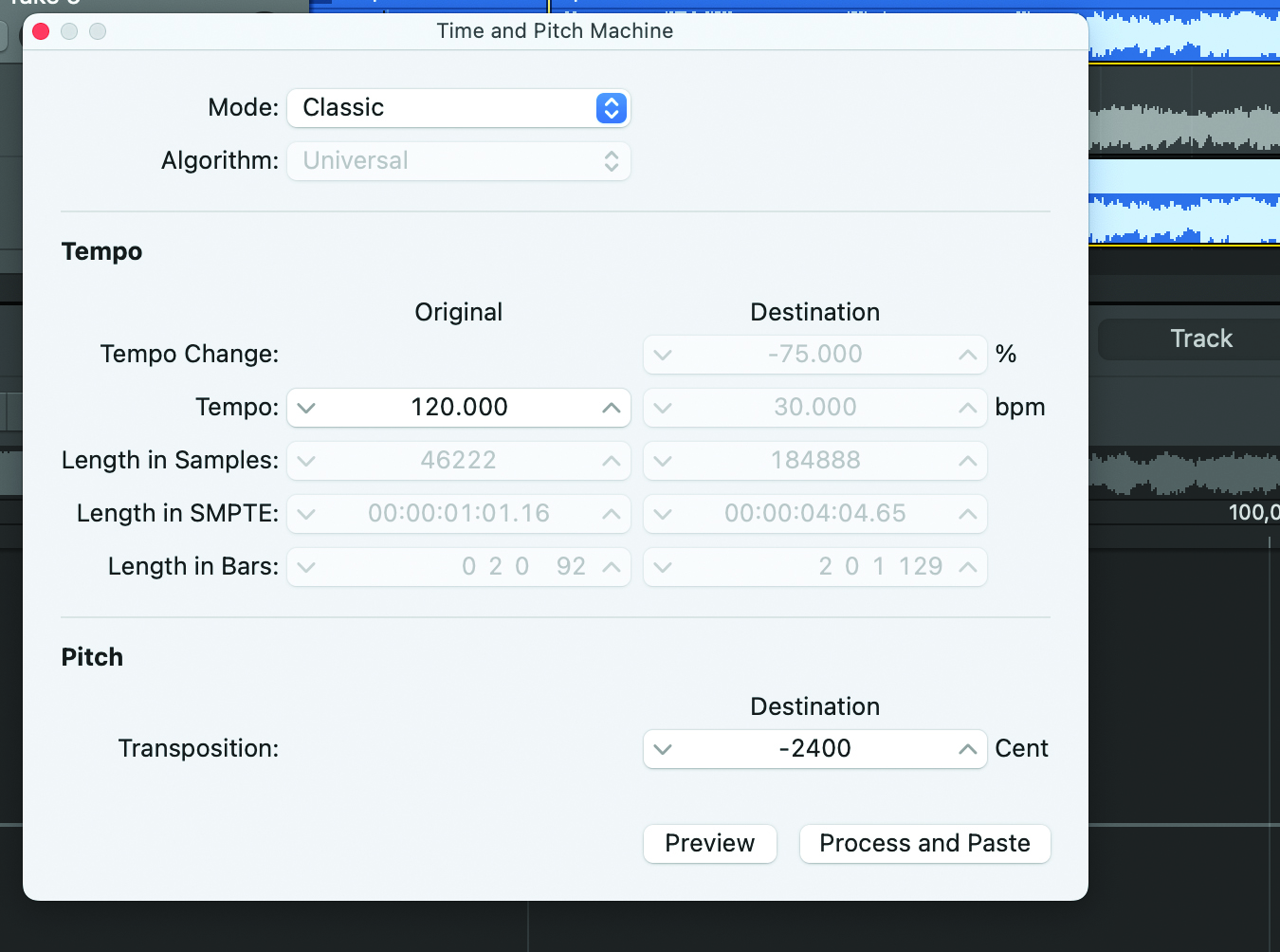How to produce cinematic beats worthy of a Hollywood epic
Enormous drum and percussion sounds are the order of the day as we turn our attention to producing blockbuster beats suitable for a Hollywood epic

Step 1: Our first sound combines foot stamps and a large book whacked on a cupboard. The stamping is hard and percussive, while the book whack is fat and heavy. We pick a few of the stamps and a couple of the thumps, and offset the timing slightly, particularly for the stamps. A bit of careful balancing and we have a slightly flammed attack with a solid thump. (Audio: Step 1)

Step 2: Recording a knife slicing through something on a chopping board (a carrot, in our case) can sound great. For a percussive sound we need a tight one-shot effect, so we’re editing the tail of our recording. However, we keep the front slicing effect, which sounds a bit like a reverse snare. We’ll need to bear this in mind for timing purposes later.

Step 3: If you want a musical accent that really cuts through, it’s typically done with some kind of cymbal or white noise effect. However, a good found sound alternative is breaking glass, which can also impart an urban or desolate feel. Here we have three samples, layered for energy and power.

Step 4: Metal objects usually produce a ringing sound with a quick decay. Striking a fire extinguisher gets us a ringing tone, which we can pitch down to create a darker effect. We use a varispeed-type pitchshift, so that the sound becomes longer as we pitch it down.
Want all the hottest music and gear news, reviews, deals, features and more, direct to your inbox? Sign up here.
Computer Music magazine is the world’s best selling publication dedicated solely to making great music with your Mac or PC computer. Each issue it brings its lucky readers the best in cutting-edge tutorials, need-to-know, expert software reviews and even all the tools you actually need to make great music today, courtesy of our legendary CM Plugin Suite.
